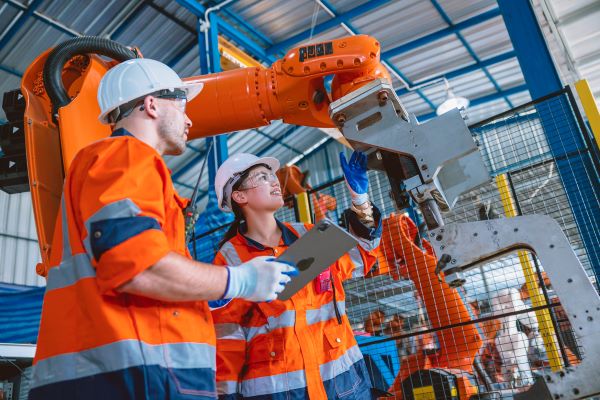Who are they, and what do they need to succeed?
The manufacturing workforce is changing. We can all feel it. By 2025, most Boomers will have retired, taking with them 35 years’ worth of institutional knowledge.
It’s difficult to overstate just how big an impact this will have on the industry in the coming years. It’s a changing of the guard at an unprecedented scale - and without putting clear strategies in place to manage the very different needs of the New Manufacturing Workforce that will take their place, I think manufacturers are going to find themselves in a world of trouble.
So, what should we be doing differently?
By 2025, Millennials will make up 75% of the manufacturing workforce. About 27% of workers will be Gen-Z. These are the first generations born into the digital age. They’re smart. They’re tech-savvy. They know a lot that older generations don’t. They’re driven differently and, perhaps most importantly, they learn differently.
I believe there are two critical generational characteristics that we have to leverage in order to unlock Millennial and Gen-Z potential in the workplace. The first is their unique relationship with technology.
In a recent study we carried out, 71% of Millennials surveyed said that the degree to which an organization embraces technology and innovation has a direct impact on their decision to work there. 61% said they wanted to use their smartphone at work. These generations want to consume information and work in modes and mediums which feel familiar to them, surrounded by the technology they grew up with.
This means we need to take a hard look at how information is presented, accessed and consumed within our organizations, and move towards interactive, digital modes of information dissemination. To Millennials and Gen-Z, interactive digital experiences feel like home.
New Manufacturing Workforce's relationship with technology
The New Manufacturing Workforce’s relationship to technology also presents a major opportunity: in a rapidly changing, innovative manufacturing environment, Millennials and Gen-Zers are agile and adept at assimilating new technologies and work processes. Their natural comfort around tech is something manufacturers can lean into – when it comes to implementing something new, there’s no employee adoption lag.
The second generational characteristic which should pay close attention to is the way Millennials and Gen-Zers learn. When it comes to training and upskilling Millennials and Gen-Zers, manufacturers have to accept that text-heavy paper manuals, PowerPoint presentations and hours spent in the classroom are inefficient and ineffective.
How New Manufacturing Workforce learns best
The New Manufacturing Workforce learns best when learning is accessible, interactive, visually driven, tech-enabled and multi-modal, accommodating different learning styles and neuro-divergent workers (asking a young worker with ADHD to read and retain long text-based manuals sets them up to fail). Ideally, they want to be trained with the material they’ll be working with at their stations, which means traditional product content needs a major overhaul.
A company culture of learning and continuous investment in their development is also of key importance to the New Manufacturing Workforce. Being made to feel like their development is an organizational priority is one of the top reasons Millennials stay with a company. According to one Deloitte study, 80% of Millennials said that on-the-job training, continued professional development and formal training were critical in helping them to perform at their best.
We’re on track to have 2.1 million unfilled positions in the US manufacturing sector by 2030, and if we have any hope of filling them, we need to think differently about how we attract, train and retain the New Manufacturing Workforce, and adapt the way we operate to accommodate their needs.
Manufacturers need to develop clear formal strategies around how they’re going to handle this imminent changing of the guard, particularly when it comes to preserving institutional knowledge and successfully training a new generation of workers.
The New Manufacturing Workforce will be fundamentally different from those that came before, and if we want to work with them, we first need to understand them.
So here’s my challenge to you: tomorrow morning, when you get to the workplace, find one of this new generation of workers who will take the manufacutring industry forward and ask them what they feel they need to succeed at work. Then listen.



